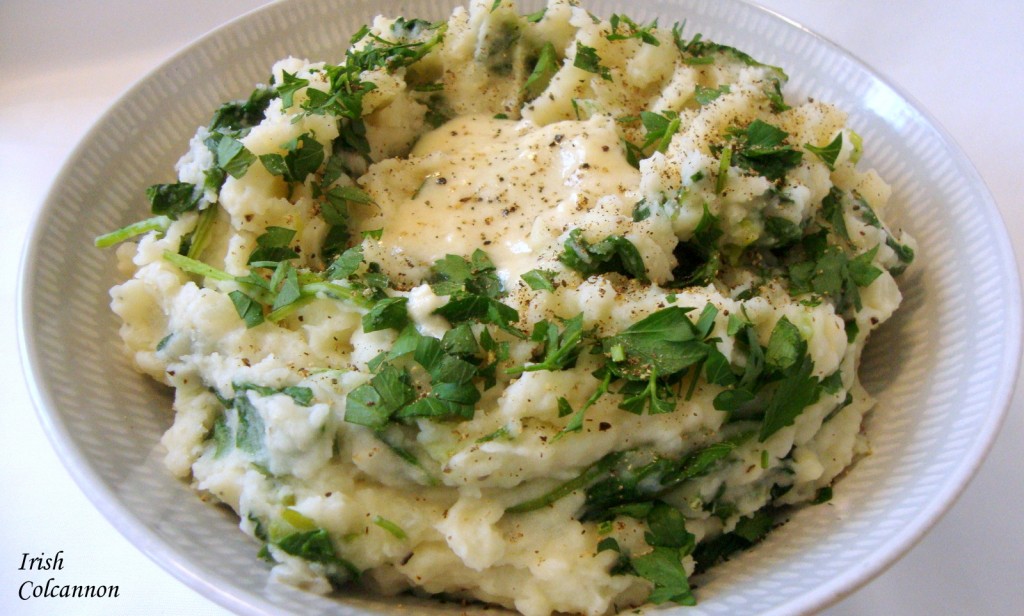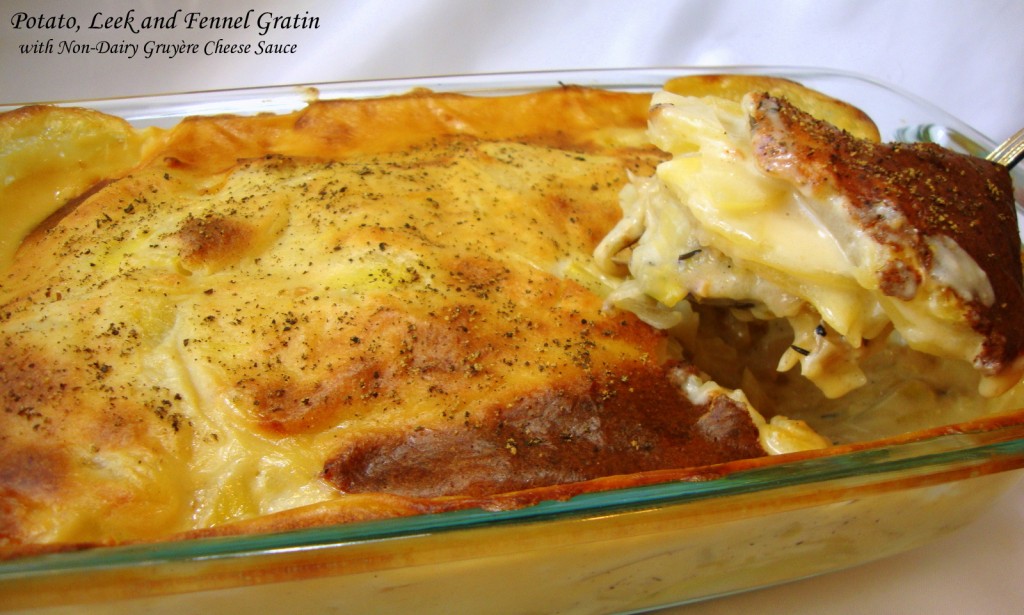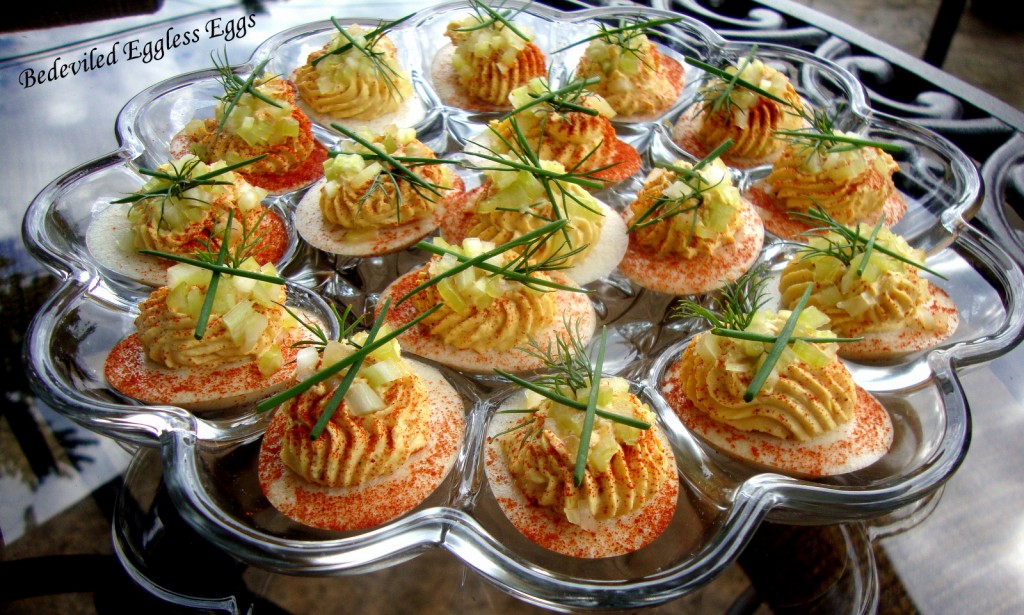Vegan Tamales
The recipe can now be found in my new cookbook, What’s Cookin’ Too
The recipe can now be found in my new cookbook, What’s Cookin’ Too
Ingredients for the Salad
• crumbled non-dairy Feta
(from my Nuts about Almonds Cookbook or Non-Dairy Evolution Cookbook)
• mixed greens of your choice*
• pomegranate seeds
• orange segments
• chopped walnuts, raw or lightly toasted
• sea salt or kosher salt and coarse ground black pepper to taste
Ingredients for the Dressing
• 1 and ½ cup pomegranate juice
• 1 cup olive oil
• ¼ cup champagne vinegar, white wine vinegar, rice vinegar or raw apple cider vinegar
• 2 T minced shallot or red onion
• ½ tsp sea salt or kosher salt
• ½ tsp coarse ground black pepper
*Baby spinach, kale, Swiss chard and mizuna were used for the photo.
Preparation
For the dressing, simmer the pomegranate juice in a small saucepan until reduced to approximately ¼ cup. Cool and chill until ready to make the dressing.
Add the pomegranate reduction and the remaining dressing ingredients to a shaker jar and shake until emulsified. Chill thoroughly. Shake the jar thoroughly again before using.
Arrange the salad ingredients on individual plates and drizzle with the dressing; season with salt and pepper to taste.
The Festive Sharp White Cheddar Cheese Logs are made with my recipe and technique for Sharp White Cheddar Amandine from my Non-Dairy Evolution Cookbook (available through this website), but rather than using toasted almonds for the crust, the cheese logs were rolled in a mixture of finely chopped dried cranberries and crushed toasted walnuts for the first log, and then freeze-dried chives and minced red onion for the second log. The colors and flavors make a nice holiday cheese plate presentation. Serve with your favorite crackers.
 Colcannon is a traditional Irish dish consisting of creamy, buttery mashed potatoes and tender cooked kale seasoned with green onions, salt, pepper and parsley.
Colcannon is a traditional Irish dish consisting of creamy, buttery mashed potatoes and tender cooked kale seasoned with green onions, salt, pepper and parsley.
Ingredients
• 3 pounds russet potatoes (about 4 large)
• ½ cup non-dairy butter or margarine,
plus 1 to 2 T additional melted butter or margarine for garnish
• 1 cup hot non-dairy milk
• 1 T olive oil
• 6 oz baby kale; or mature kale with tough ribs removed and then chopped
• 3 green onions, white and green parts, finely chopped
• sea salt or kosher salt, to taste
• coarse ground black pepper, to taste
• 2 T chopped parsley for garnish
Preparation
Peel and cut the potatoes into large chunks. Immediately immerse the cut potatoes in 4 quarts of water. Add 1 tablespoon of salt and bring to a boil. Cook until fork tender, about 8 to 10 minutes.
While the potatoes are cooking, flash sauté the kale and green onions with the olive oil in a large skillet until the kale is wilted and tender. Transfer to a bowl and set aside.
Drain the potatoes in a colander and then transfer to a large mixing bowl or back to the cooking pot. Mash the potatoes with the butter and hot milk. Add salt and pepper to taste. Stir in the sautéed kale and green onions.
Transfer the colcannon to a serving dish and garnish with the parsley. Make a well in the center of the colcannon and garnish with a tablespoon or two of melted butter or margarine. Serve immediately.
 Sliced Yukon gold potatoes, fennel bulb and chopped leeks are bathed in a rich non-dairy Gruyère-style cheese sauce and baked until browned and bubbly.
Sliced Yukon gold potatoes, fennel bulb and chopped leeks are bathed in a rich non-dairy Gruyère-style cheese sauce and baked until browned and bubbly.
Ingredients
• 2 T non-dairy butter or margarine, plus 1 T for greasing the baking dish
• 2 and ½ lbs Yukon gold potatoes
• 2 large leeks, white and light green parts only,
split lengthwise, rinsed well and chopped into half “moons”
• 1 large fennel bulb, cored and sliced very thin
• 2 cloves garlic, minced
• ½ tsp dried thyme leaves
• coarse ground black pepper, to taste
• 2 cups Gruyère Cheese Sauce (see following recipe)
Gratin Preparation
Grease the interior of a shallow, rectangular baking dish with 1 tablespoon butter or margarine and set aside.
Peel the potatoes and slice them ⅛-inch thick. A mandoline makes the job much easier and creates more uniform slices – but watch your fingers! Place the slices immediately into a large pot of water to prevent the slices from oxidizing (turning brown). Add 2 teaspoons of salt. Bring to a boil and cook for exactly 1 minute. Remove from the heat and drain the slices thoroughly in a colander. Set aside.
Add the remaining butter or margarine to a skillet and place over medium heat. Add the leeks and fennel and sauté until tender and golden. Add the garlic, thyme and a dash of black pepper and sauté an additional minute. Remove from the heat and set aside.
Preheat the oven to 375°F/190°C.
Prepare the Gruyère cheese sauce; set aside over low heat to keep warm.
Layer ⅓ of the potatoes in the bottom of the baking dish and top with half of the leek and fennel mixture. Pour half of the cheese sauce over the layers. Repeat layering with another ⅓ of the potatoes, the remaining leek and fennel mixture and finish with a layer of potatoes. Cover with the remaining sauce and season with additional ground black pepper.
Bake uncovered for 45 minutes or until browned nicely. Remove from the oven and serve.
Gruyère Cheese Sauce
Dairy Gruyère is a slightly salty, ripened Swiss cheese. While its texture and complex flavor is difficult to reproduce in non-dairy form, this cheese sauce captures the flavor of Gruyère fairly well, while retaining its own unique character.
Sauce Ingredients
• 1 and ¾ cup plain unsweetened soymilk
• ¼ cup mild vegetable oil
• ¼ cup tapioca starch
• ¼ cup mellow white miso paste
• 2 T nutritional yeast flakes
• 2 T extra-dry vermouth or dry white wine
• 2 tsp raw apple cider vinegar
• ½ tsp kappa carrageenan (available from ModernistPantry.com)
• ½ tsp fine sea salt or kosher salt
• ¼ tsp dry ground mustard
• ¼ tsp ground coriander
*The vermouth or wine can be omitted for health or ethical reasons, but this will alter the flavor profile.
Sauce Preparation
In a small saucepan, vigorously whisk together the ingredients until smooth (a blender can also be used to efficiently combine the ingredients). Cook the mixture over medium-low heat, stirring slowly and continually with a flexible spatula.
As the mixture thickens and curdles (forms lumps), begin stirring vigorously until the curds disappear and the cheese becomes very thick, smooth and glossy. Keep warm over low heat, stirring occasionally, until ready to use. For a spreadable consistency, remove from the heat and allow the melt to thicken.
 Bedeviled eggless eggs are remarkably similar to deviled eggs in appearance, taste and texture. They make the perfect bite-size finger food for BBQs, picnics and parties. Kala namak, or Himalayan black salt, is essential to impart that familiar egg-like taste to these savory bites.
Bedeviled eggless eggs are remarkably similar to deviled eggs in appearance, taste and texture. They make the perfect bite-size finger food for BBQs, picnics and parties. Kala namak, or Himalayan black salt, is essential to impart that familiar egg-like taste to these savory bites.
A blender is required for preparing the “egg whites” and a food processor is recommended for the “yolk filling”. You will also need an 8” square baking pan and 1 block (about 14 oz. before pressing) extra-firm water-packed tofu (not silken tofu). If you have egg molds, or a heat-proof container that specifically holds deviled eggs, the “egg white” mixture can be poured directly into the molds to create perfect, halved hard-boiled egg shapes. This recipe yields 16 to 24 bedeviled eggless eggs or more depending upon the mold(s) used for the “egg whites”.
Ingredients for the “Egg Whites”
• ⅓ block (about 5 oz before pressing) extra-firm tofu (not silken tofu)
• ¾ tsp kala namak (Himalayan black salt)
• 2 cups water
• 2 and ¼ tsp agar powder
Ingredients for the “Yolk” Filling
• ⅔ block (about 9 oz before pressing) extra-firm tofu (not silken tofu)
• ¼ cup eggless mayonnaise
• 1 T nutritional yeast flakes
• 1 T dill pickle brine
• 2 tsp Dijon mustard or spicy golden mustard
• ½ tsp onion powder
• ¼ tsp kala namak* (Himalayan black salt), or more to taste
• ¼ tsp sweet paprika (for extra “bedeviling” add a pinch of cayenne pepper too)
• ¼ tsp ground turmeric
Garnishes
• sweet paprika
• optional: coarse ground black pepper, sliced black olives; fresh snipped chives or “spears”; capers; minced celery; minced onion; chopped cornichons; chopped dill or dill “fronds”
Preparation
Drain and press the tofu until it is not releasing any more liquid. Slice ⅓ of the tofu to use for the “egg whites”. The remaining ⅔ will be used for the “yolk” filling.
To prepare the “egg whites”, place the “egg white” ingredients into a blender and process until smooth. Pour the mixture into a saucepan and bring to a simmer over medium heat, stirring frequently to avoid scorching the tofu mixture. Avoid boiling as this will cause the soy protein to re-coagulate (a minimal degree of re-coagulation may occur as the mixture is brought to a simmer but will not affect the final appearance or texture). Pour the mixture into the 8” baking pan and set aside to cool. If you have egg molds, or a heat-proof container that specifically holds deviled eggs, pour the tofu mixture directly into the molds and set aside to cool. After cooling a bit, refrigerate until completely set, about 1 hour.
Next, crumble the ⅔ block of pressed tofu into the food processor and add the remaining “yolk” filling ingredients. Process the contents until completely smooth, stopping as necessary to scrape down the sides of the food processor. Alternately, the mixture can be mashed using a fork or a potato masher/ricer, but the mixture will not be as smooth. Taste the mixture and add additional kala namak (or sea salt) as desired.
Transfer the “yolk” mixture to a bowl or food storage container, cover and refrigerate until ready to use.
Now, run a table knife around the perimeter of the baking pan to loosen the “egg white” (or simply pop them out of the egg molds). Invert the baking pan onto a clean work surface. At this point, the “egg white” can be cut into rectangles or cut into rounds or ovals.
For rectangles, cut the “egg whites” into 6 even strips. Turn your cutting surface and make 4 even slices. This will create 24 rectangles. For rounds or ovals, use a 1 and ½-inch to 1 and ¾-inch cookie cutter or ring mold. Any “egg white” remnants can be finely diced and mixed with any of the leftover “yolk” filling for a quick eggless egg salad sandwich.
Spoon a generous teaspoonful of the “yolk” mixture onto the top of each “egg white”. Alternately, the mixture can be decoratively piped onto the “egg whites” using a pastry bag. If you don’t have a pastry bag, try placing the mixture into a zip-lock bag, seal and then snip off a tiny piece from the bottom corner of the bag with scissors. Squeeze the bag to pipe the mixture onto the “egg whites”.
Sprinkle with paprika and garnish with optional ingredients as desired. Cover gently with plastic wrap and chill thoroughly before serving.